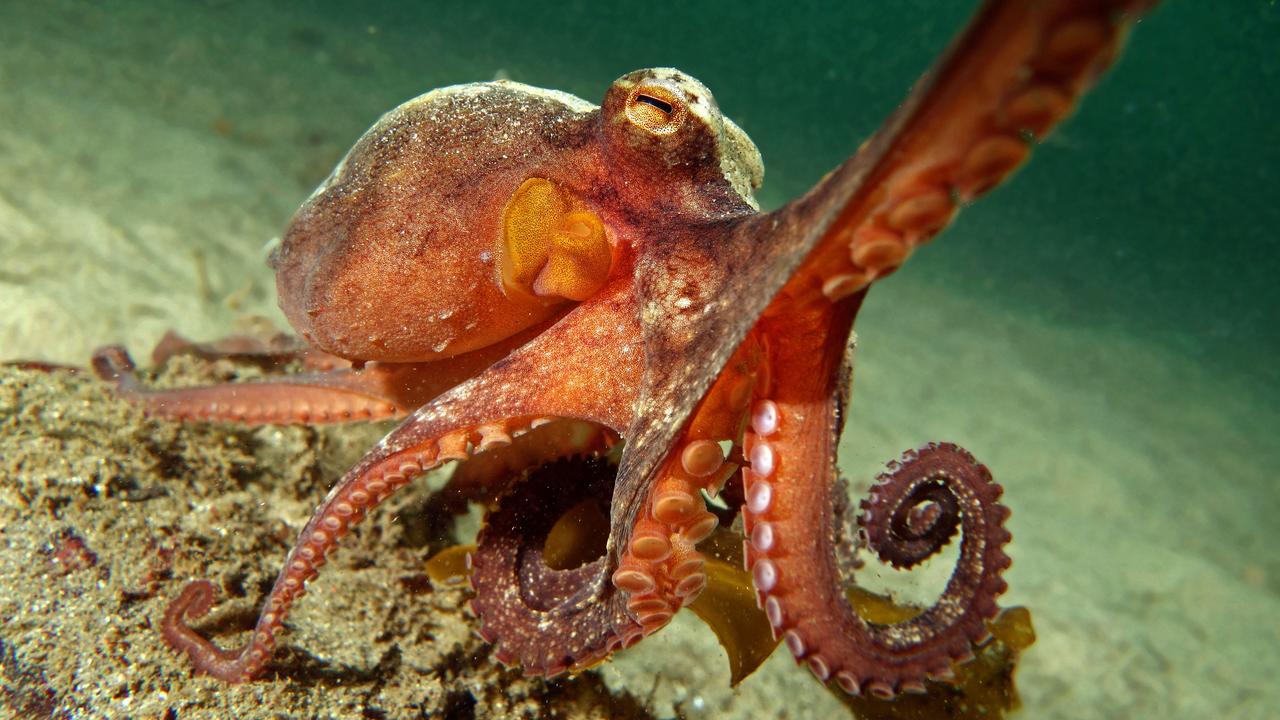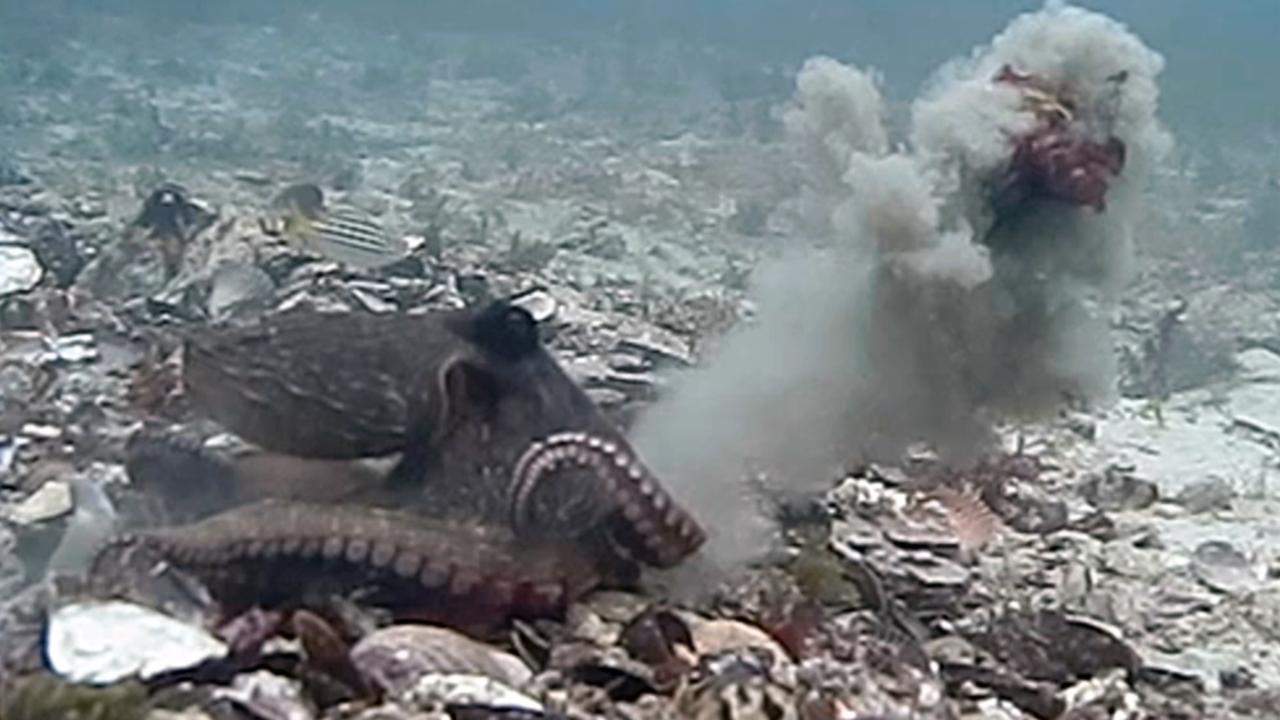These octopuses are gloomy by name and nature
Their name says it all. Australian gloomy octopuses have been captured on video for the first time throwing silt and shells at each other in bad mood outbursts. WATCH THE VIDEO

READING LEVEL: GREEN
Their name says it all. Australian gloomy octopuses are indeed an unhappy bunch, new research suggests.
An international study led by the University of Sydney found the octopuses have a bad-tempered habit of throwing silt* and shells around themselves and at each other in what appears to be deliberate, aggressive behaviour.
WATCH THE VIDEO

The researchers filmed the wild octopuses in Jervis Bay, NSW, observing them gathering silt and shells with their eight arms and then ejecting it all in a jet of debris* through a tube next to their head.
This tube, known as a siphon, propelled silt and shells up to several body lengths away.
The octopuses have to move their siphon to an unusual position to do this, suggesting the behaviour is deliberate.
It is the first time octopuses have been seen throwing debris from the sea floor at each other.


The researchers filmed the sea creatures for 24 hours and counted 102 throws between 10 octopuses.
Both males and females performed the behaviour, but females were responsible for two out of three throws.
While only about one in six throws hit another octopus, those in the firing line were seen to duck or raise their arms at the thrower.
In one instance, the researchers watched a female octopus repeatedly launch silt at a male that had been trying to mate with her, with the male frequently ducking to avoid the hits.
There was even a case where octopuses hurled* silt towards one of the researchers’ cameras, and another two cases where throws hit fish.
Lead researcher Professor Peter Godfrey-Smith said it was difficult to say for sure if the octopuses were throwing silt and shells out of aggression, with only a “minority of cases” appearing to be aimed at other creatures.
He said the researchers did not see any “return fire” or retaliation* from octopuses who were hit.

But he said the cases that looked to be aggressive might have been sparked by cramped living conditions, with the site in Jervis Bay containing so many octopuses that researchers had dubbed it “Octopolis”. This description is a combination of the words octopus and metropolis, which means a very large and busy city.
“I’d speculate that a lot of the targeted throws are more like an attempt to establish some ‘personal space’,” Prof Godfrey-Smith said.
“But this is a speculation, it’s very hard to know what their goals might be.”
The research, involving researchers from Australia, the US and Canada, was done in 2015-2016 and published in the Plos One journal last week.
GLOSSARY
- silt: fine sand or dirt that sits on a sea floor or riverbed
- debris: pieces of something that has been broken down
- hurled: thrown with force
- retaliation: the act of hurting or harming someone in return for the hurt or harm they have caused
EXTRA READING
Octopus fossil found with extra arms
Shark cam captures life and death struggles
‘Cute and weird’ sea slugs lose their heads
QUICK QUIZ
- In which location were the gloomy octopuses filmed?
- How many throws did the researchers observe in 24 hours?
- Which gender was responsible for the most throws?
- What does Professor Godfrey-Smith think might have sparked the aggressive looking throws?
- What nickname have the researchers given this area of Jervis Bay?
LISTEN TO THIS STORY
CLASSROOM ACTIVITIES
1. Fact and interpretation
It is important to be able to distinguish between actual observed events and interpretations of the reasons for these events. Print or copy this news article. Highlight in green, the factual observed behaviours of the octopuses. Then, in yellow, highlight the possible interpretations given for the behaviour.
What other possibilities could there be? Suggest an alternative reason for the octopuses behaviour.
Time: allow 15 minutes to complete this activity
Curriculum Links: English; Science
2. Extension
Observe and document some animal behaviour. Choose an animal (or animals) that you have easy access to, such as a pet, a crawling insect, wild birds etc. Set a 10-minute timer. Observe the animal(s) and write down what they do. Focus on making your notes factual – write down only what the animal does, not the reasons why you think they might be behaving that way.
Time: allow 10 minutes to complete this activity
Curriculum Links: English; Science
VCOP ACTIVITY
I spy nouns
Nouns are places, names (of people and objects), and time (months or days of the week).
How many nouns can you find in the article? Can you sort them into places, names and time?
Pick three nouns and add an adjective (describing word) to the nouns.

